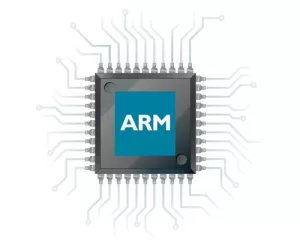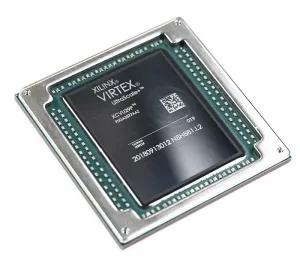
Comparison of ARM and FPGA: Main Differences between them
September 04 2023 
Inquiry
Global electronic component supplier AMPHEO PTY LTD: Rich inventory for one-stop shopping. Inquire easily, and receive fast, customized solutions and quotes.
QUICK RFQ
ADD TO RFQ LIST
Integrated circuits (ICs) of the ARM and FPGA varieties are employed in a range of applications. We'll go over the key distinctions between ARM and FPGA in this blog post. We will also give some real-world examples of how each type of IC is used.
What is ARM?
Advanced RISC Machine (ARM) is a processor architecture based on a 32-bit reduced instruction set (RISC) computer. The most widely used 32-bit instruction set architecture is ARM, which has a global license. Windows, Unix, and Unix-like operating systems, such as Apple iOS, Android, BSD, Inferno, Solaris, WebOS, Plan 9, and GNU/Linux, all use the ARM architecture.
ARM Features
- Architecture based on loads and stores
- Execution of single-cycle instructions
- Dependable 16-bit, 32-bit register file
- Link register
- Simple pipelining and decoding
- Addressing modes with power indexes
- 32-bit fixed instruction set
What is FPGA Chip?
A field programmable gate array, or FPGA, is a kind of integrated circuit (IC) that makes it possible to create unique logic for quick system prototype and final system design. Because of their intrinsic flexibility, FPGAs can be programmed and reprogrammed by software download to adapt to the changing needs of the larger system into which they are integrated, setting them apart from other custom or semi-custom ICs. For today's most rapidly expanding applications, such as edge computing, artificial intelligence (AI), system security, 5G, factory automation, and robotics, FPGAs are the perfect choice.
FPGA Features
- High integration
- Function generator with flexibility
- Avoid the ASICs issue
- Physically small
- The PLD is compatible with FPGA.
- Little power usage
- Dependability and high density
- Moreover, programming is incredibly adaptable
- Online, real-time test
ARM VS FPGA: How do they work?
How does an ARM work?
The way an ARM processor operates is by reading instructions out of memory, decoding them, and then carrying them out. One by one, the instructions are read from memory and then decoded into the steps the processor needs to do in order to carry them out. Depending on the instruction, a different set of steps are needed to complete it. But a few typical actions are as follows:- Register access: Register access is necessary for the processor to read or write data.
- Arithmetic operations: The processor is required to execute calculations on the data.
- Logic operations: The processor is required to apply logic to the data.
- Control flow: The processor must decide which instruction to carry out next in the control flow.
How does an FPGA work?
Each logic block in the grid that makes up an FPGA can be set up to carry out a different logic operation. The user can design unique logic circuits since the logic blocks are joined via a programmable connection. The fundamental workings of an FPGA are as follows:- Using a hardware description language (HDL), the user builds a digital circuit.
- After that, the HDL code is transformed into a configuration file and inserted into the FPGA.
- In order to implement the design in the configuration file, the FPGA subsequently configures its logic blocks and interconnects.
- Now that the digital circuit is ready, the FPGA can run it.
Video related to ARM VS FPGA
ARM VS FPGA: What are the main differences between them?
Here is a table summarizing the key differences between ARM and FPGA:| Feature | ARM | FPGA |
| Type | Microcontroller | Field-programmable gate array |
| Function | Fixed-function | Reconfigurable |
| Performance | Faster for general-purpose computing tasks | Faster for specific tasks that require a lot of parallel processing |
| Power efficiency | More power-efficient | Less power-efficient |
Advantages and Disadvantages of ARM and FPGA
Advantages of ARM
- Work More Quickly: ARM only does one operation at once. This speeds up its operation. It features a speedier response time and decreased latency.
- Simple Circuits: ARM processors contain simple circuits, making them very tiny and suitable for usage in smaller devices (many products are getting smaller and more compact as a result of consumer demands).
- Cost-effective: Because ARM processors are frequently less expensive than other processor types, manufacturers may find them to be a cost-effective option.
- Small size: ARM processors are more compact than other CPU types, making them ideal for usage in portable electronics.
- Multiprocessing feature: ARM processors are built with a multiprocessing feature that allows them to be used in systems that employ many processors to process data. The first AMP processor, known as ARMv6K, had the hardware ability to support 4 CPUs.
- Better Battery Life: The battery life of ARM processors is better. This is evident while managing both ARM-based and non-ARM-based devices. Those who worked on ARM processors put in more hours and were let go later than those who did not.
- Load store architecture: To minimize memory interactions, the processor uses a load store architecture that stores data in a variety of registers. To move data from external memory to the register bank, it has distinct load and store instructions.
- Low Power Consumption: The power consumption of AMP Processors is lower. Initially, they were intended to operate at lower power. Even so, their architecture uses fewer transistors. They also have additional characteristics that make this possible.
Disadvantages of ARM
- Some processors have speed limitations, which could be problematic.
- When using ARM processors, scheduling instructions might be challenging.
- The programmer must execute instructions correctly. This is because the execution of them determines the total performance of ARM processors.
- Programmers with extreme skill are required for ARM processors. This is due to the significance and complexity of execution (a processor performs worse when improperly performed).
- Limited performance: ARM processors may not have the same processing capability as other processor types, which may affect their capacity to execute more demanding programs.
- Compatibility: The range of programs that can be operated on ARM-based devices may be constrained by the incompatibility of some software with ARM processors.
- Limited multitasking: ARM processors may not multitask as effectively as other processor types, which may restrict their capacity to run numerous applications at once.
Advantages of FPGA
- Logic level programming is possible for FPGAs. As a result, it can implement faster and parallel signal processing. It is challenging for the processor to carry this out.
- FPGAs, in contrast to ASIC, which are fixed once programmed, are modifiable at any time at the software level. Therefore, the FPGA IC can be reprogrammed or reused endlessly. Additionally, FPGA can be programmed remotely.
- FPGA ICs are easily accessible and quick to program using HDL code. Therefore, the market can access the solution more quickly.
- In contrast to ASIC, which has high NRE (Non Recurring Expenses) and expensive tools, FPGA development is less expensive because it uses cheaper tools and has no NRE.
- Software handles routing, placement, and timing in FPGA design. Less manual intervention is made as a result. The design flow does away with difficult and time-consuming floor planning, timing analysis, and place and router.
Disadvantages of FPGA
- Digital system principles and the VHDL/Verilog programming languages are both needed for FPGA development. The programming is more complex than the C programming used in hardware with processors. Additionally, engineers must understand how to use simulation tools.
- More power is consumed, and FPGA programmers have no control over power optimization. ASIC has no such difficulties.
- Programmers must utilise the resources on the FPGA IC once a specific FPGA has been chosen and used in the design. This will restrict the size and characteristics of the design. An appropriate FPGA needs to be picked right away in order to prevent this issue.
- For low-volume production and prototyping, FPGAs are preferable. Cost per unit likewise rises as the number of FPGAs to be created does. With the implementation of ASIC, this is not the case.
ARM and FPGA Applications
ARM Applications
- Mobile devices: The most common type of processor found in smartphones and tablets is the ARM architecture. They are utilized due to their tiny size, low power consumption, and good performance.
- Embedded systems: A wide range of embedded systems, including networking hardware, medical equipment, and industrial controls, use ARM CPUs. They are employed because they are adaptable and may be tailored to satisfy the particular requirements of an application.
- Servers: As ARM processors offer an excellent blend of performance and power efficiency, they are rapidly being employed in servers.
- Wearable devices: ARM processors are utilized in gadgets like fitness trackers and smartwatches. They are utilized due to their compact size and low power.
- IoT devices: Sensors and actuators that are part of the IoT employ ARM processors. They are utilized because they require little power and are simple to connect to different gadgets.
- Car: ARM processors are utilized in entertainment systems and driving assistance systems, among other car applications. They are utilized because to their tiny size, low power consumption, and simplicity of integration into other automotive systems.
- 5G: Because ARM processors can manage the high data rates and low latency needs of 5G, they are employed in 5G networks.
FPGA Applications
- Telecommunications: Switching, routing, and signal processing tasks are implemented by FPGAs in telecommunications equipment. For instance, FPGAs are used in modems to convert digital impulses to analog signals and vice versa as well as in routers and switches to route data between various networks.
- Networking: FPGAs are used to implement routers, switches, and firewalls in networking hardware. For instance, FPGAs are used in firewalls to filter traffic and deter unwanted access as well as in routers to route traffic between various networks.
- Industrial controls: To implement safety systems, motion control, and data collecting, FPGAs are employed in industrial controls. FPGAs, for instance, are employed in medical equipment to monitor patient vital signs and in industrial robots to control the movement of the robot.
- Consumer electronics: FPGAs are a common component of consumer electronics products including TVs, tablets, and smartphones. For instance, the image processing unit (IPU) and graphics processing unit (GPU) of TVs and smartphones, respectively, are implemented using FPGAs.
- Medical devices: To implement diagnostic, imaging, and medication delivery systems, FPGAs are employed in medical devices. FPGAs, for instance, are employed in pacemakers to regulate heart rhythm and in MRI machines to capture and analyse pictures.
- Defense and aerospace: FPGAs are utilized in systems like radars, missile guidance systems, and satellite communications systems in the aerospace and defense industries. FPGAs, for instance, are employed in missile guidance systems and radar systems to detect and track objects, respectively.
- Research and development: FPGAs are used in research and development to test novel concepts and prototype new designs. For instance, FPGAs are used to prototype novel machine learning and artificial intelligence algorithms.
Conclusion
ARM and FPGA are two different types of digital ICs that are used in a variety of applications. ARM is a fixed-function device that is typically faster for general-purpose computing tasks. FPGA is a reconfigurable device that can be configured to perform different tasks. The best choice between ARM and FPGA depends on the specific requirements.Related Articles
- ·Stratix 10 VS Stratix V: Which FPGA is Right for Your Next Project?
- ·Intel Xeon Platinum 8454H vs AMD EPYC: Which Reigns Supreme?
- ·A Deep Dive into the AMD EPYC 4564P Processor
- ·MSP430F5438A vs MSP430F5529: A Detailed Analysis of Their Capabilities
- ·Comparing MSP430F6659 and MSP430F5419A: Which One is Right for Your Project?
- ·Exploring the Features of MSP430F5529 and MSP430F5638 Microcontrollers
- ·Demystifying 20 Microcontroller Projects for Beginners
- ·Unveiling the Ultimate Guide to Microcontroller Programming
- ·4680 Battery: Unveiling the Power Potential of the Next-Gen Cell
- ·Exploring the Case Studies on Arduino Applications
Populer Posts
